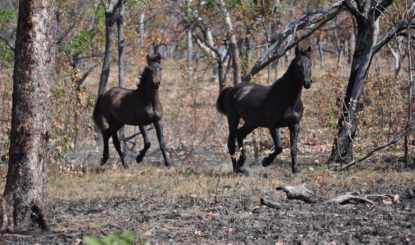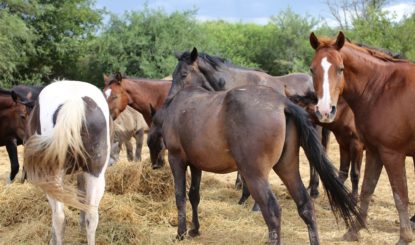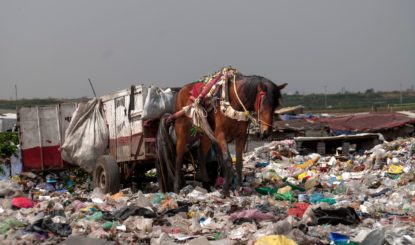Winter on Bonrook and Future Planning
As winter settles over the Bonrook rangelands, the brumbies grow thick coats to endure the cold, while controlled burns rejuvenate the land with fresh grazing areas.
Preparations are underway to reinforce the boundary fences and plan for future water needs. These efforts will maintain the balance and health of this unique landscape in our Wild Horse Sanctuary in Australia.
Here, on the pastures of Bonrook, we are in mid-winter. At night, the temperature drops to 8°C, and during the day, it doesn’t get warmer than 28°C. So we are rugged up at night and wear coats until mid-morning. The brumbies also feel the colder temperatures and have grown thick coats. They keep this extra fur until late September, when heat and humidity increase, and then they shed the excess hair.
Controlled Burns and Fresh Pastureland
We have completed the controlled burn-off on the rangelands. This year, they took place from early May to mid-June. Most of the burned land has come back with fresh grass. The brumby mobs are now found in these areas grazing and taking advantage of the fresh native grasses. They are particularly fond of a grass called kangaroo grass, which has a high nutritional value and stays fresh, unlike the taller spear and cane grass, which becomes sour once it reaches a certain height.
Yearlings in Fine Form
Last year’s foals are in fine form as they transition into yearlings. I see many of them regularly in the family groups across the property. Cheeky in nature and full of youthful exuberance, they are kept in check and disciplined by their mothers and other family members.
At this time of year, the brumbies are at their best, and the weather is favorable for them; their coats shine in the sunlight. I have placed mineral and salt blocks at the waterholes and will continue to do so until the monsoon rains make it impossible to traverse the land.
On Bonrook, the brumbies live undisturbed in their family groups – from birth to their natural death. They are not given away, sold, leased, or used in any way. Here, they are allowed to live in peace, grace and freedom.
Water Buffalo Sightings
The water buffaloes are also out and about in numbers at this time of year. Some of the cows can be seen with two calves – one from the last wet season and one from the year before, both still nursing from their mother. The calves are fat and always stay close to her. Although the mothers may seem gentle and harmless, they are extremely dangerous and protective.
Rain and New Water Sources
The last wet season was good, and we received a total of 1905 mm of rain, with localized flooding in mid-March. Good rains like these are promising for the latter part of the dry season, when temperatures rise and groundwater begins to become scarce. Since the last dry season, we have a new water source in the south-central part of Bonrook, Coolibah Bore, which is powered by solar energy. Numerous brumbies can be seen there. It is the first water source drilled on Bonrook since 1973.
Brumby Relocation
The installation of one-way gates and cameras at the eastern boundary fence is complete. In accordance with our agreement with the local Aboriginal community, the Jawoyn People, the brumbies that are on the neighbouring land can now make their way to Bonrook on their own. I have placed mineral lick blocks nearby to lure the horses through the gates. Early signs show that they are working very well! In the coming months, there will be more to report on this project.
Planned Projects
For the upcoming dry season, we plan to upgrade the northern boundary fence at river crossings with heavy-duty steel posts. We also have new safety warning signs that will be installed at all entrance gates and access points to deter trespassers, hunters and the like.
In August, we plan to drill a new water bore called “Dingo Soak” in the far southeastern part of Bonrook. This measure will greatly contribute to maintaining a healthy brumby population and ensuring they have adequate water. This will not only enhance their well-being but also help alleviate our concerns about water shortages, particularly during the dry season.


